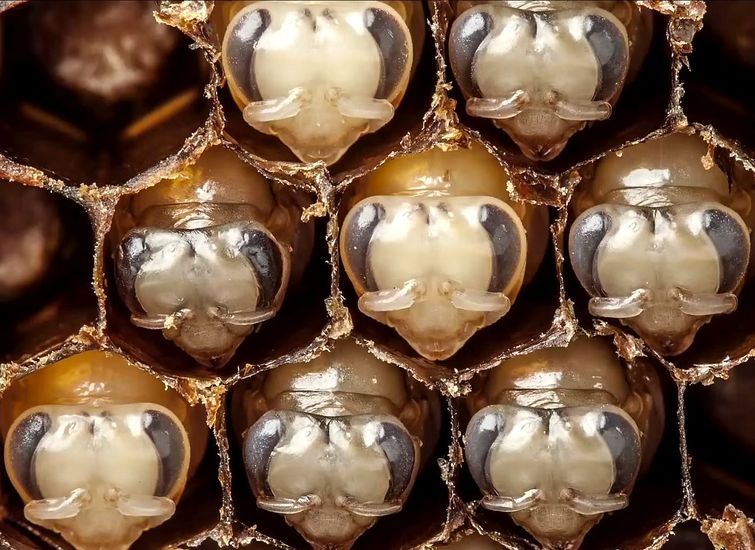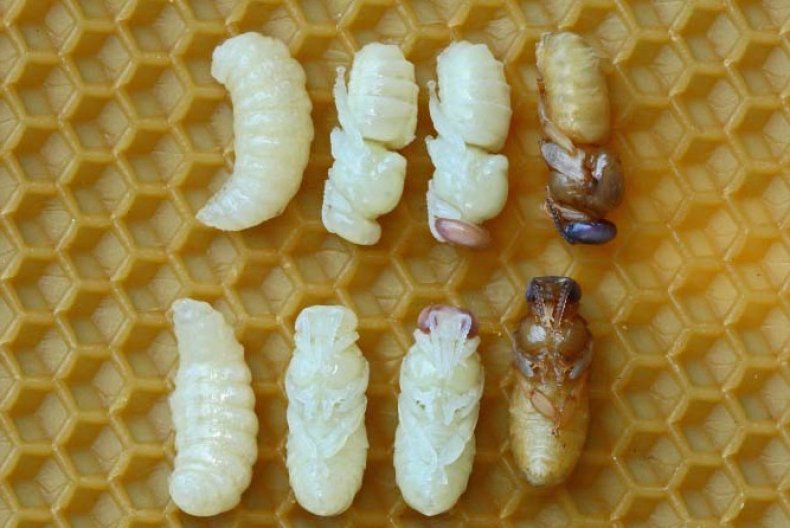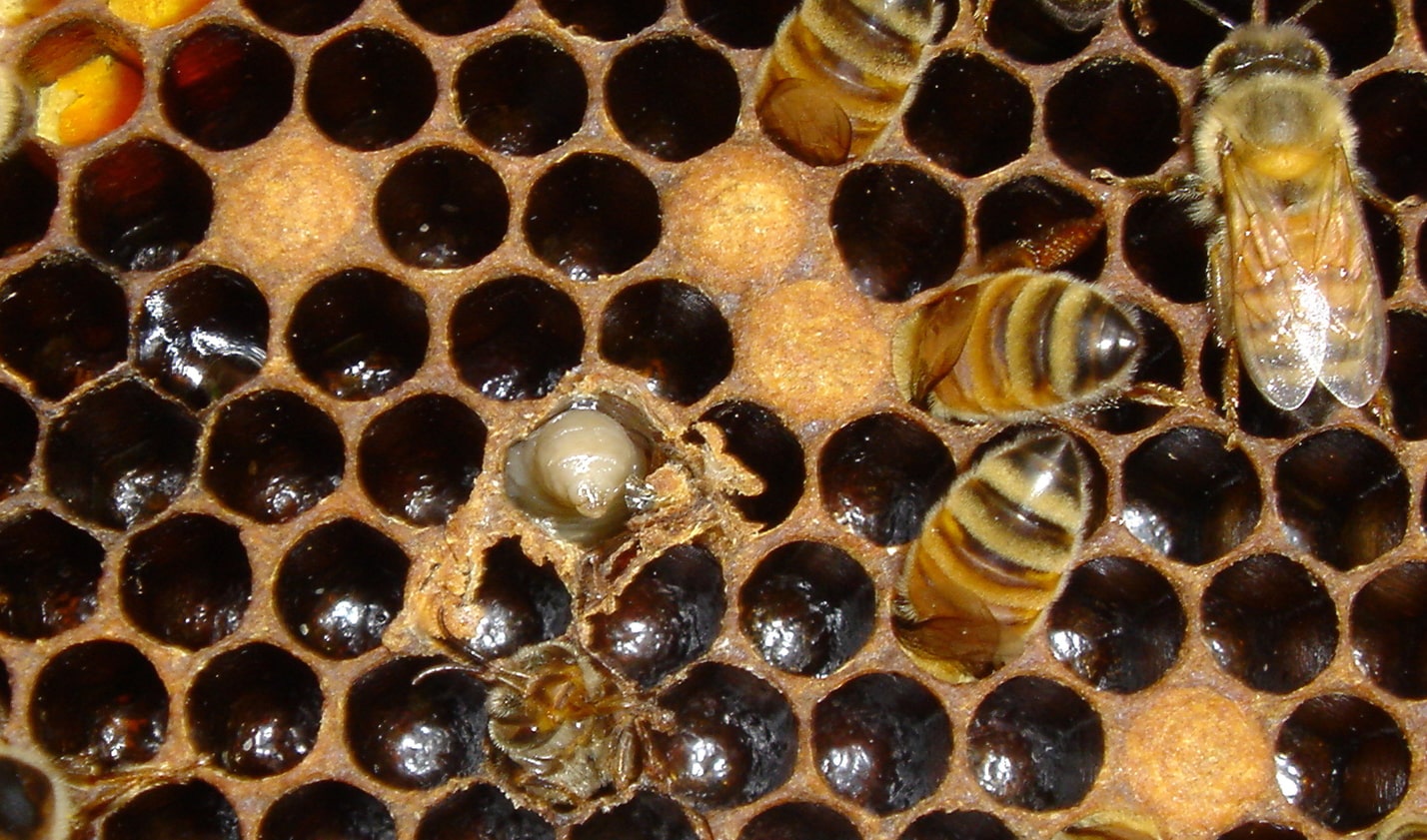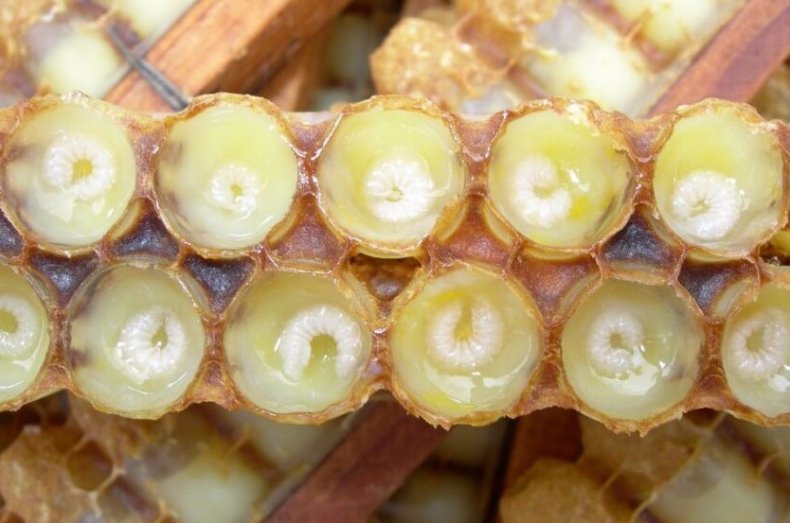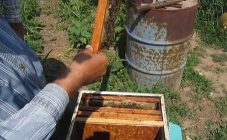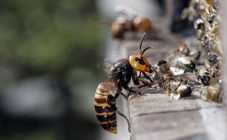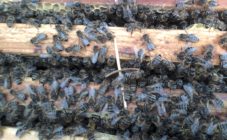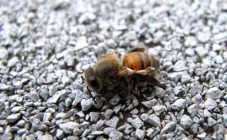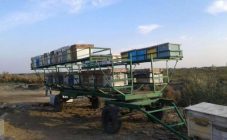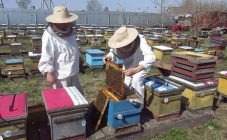Content:
Bees are fully transformed insects. The skin of the larva changes 4 times, because it has a very intensive growth.
The bee larva, pupa and egg or sowing are the brood.
The bee larva has another name - worm. Whether a bee is a drone, a worker or a queen bee depends on its initial nutrition.
Stages of development to adult
Brood development takes place in several stages:
- The embryonic period. Bee larvae hatch in the form of eggs, no more than two millimeters in size, with a dense white shell. Inside the embryo are the white and yolk. This period lasts about three days.
- Postembryonic period. The worms hatch. She needs a large amount of food to satisfy her exorbitant appetite. Rapid growth occurs and there is a need to shed skin. Due to the rapid growth, the heart does not enter the cell and it needs to move and stretch forward.
Bee larvae, as well as young bees, feed on the nurse.
For brood in the first 2 periods, a lot of royal milk is needed, which is produced in special glands on the head of the nurse bees. The larvae, which later become queen bees, feed only on royal jelly during all days of development, and for future drones and worker bees it is necessary only in the first 2 days after hatching from eggs. After that, they are gradually transferred to a mixture of honey and bee bread.
During feeding and growth, the larva must be constantly accessible from all sides for worker bees. After the necessary nutrients have accumulated, the cell is closed with wax. The grown larva hides in a cocoon, which it independently spins from a yellow thread, and the bees seal the cell with a special mixture of pollen and wax. The threads stick to the walls of the combs, changing their color to dark, and the size of the cells also decreases.
The prepupa develops in the finished cocoon. Part of her organs are transformed, and part is disintegrating. At the prepupal stage, the larva does not need food, it remains motionless, and the growth process does not occur.
When the larva is in the prepupa stage, the frames cannot be moved or removed; the temperature in the hive should remain at the same level, which the bees maintain independently.
In order for the bee larvae to turn into pupae, the correct temperature regime and a large amount of food are needed. In order for a full-fledged bee to develop from the larva, the temperature must be from +32 to +35 degrees Celsius. If the temperature drops to +31, then the individual will develop incorrectly, will be weak and with deformed wings, and an increase in the temperature regime even by one degree will lead to the death of the pupa.
After 3 days, the prepupa sheds its skin and a pupa appears that looks no different from an adult bee. When the pupa turns into a full-fledged bee, it independently gets out of the cocoon and gnaws a hole in the wax-bee lid that covers its cell.
On average, pupae turn into drones in two weeks, worker bees take 12 days, and queen bees only need 8 days.
A newborn bee is covered with hairs from legs to head. The first few days for a young individual is spent on learning about the world around and getting to know the uterus. Touching her with her antennae, she tries to remember her smell. Young animals feed on older bees.
On the fourth day, the new individual begins to feed on honey and pollen on its own, as well as produce food and feed other larvae.
Bee brood
Bee brood is a sealed yellow honeycomb on a hive frame, each containing an egg, larva or pupa.
The brood is divided into 3 groups:
- brood of different ages, with sealed and unsealed cells for larvae and sowing;
- open brood, where the heart (larva) is located;
- printed brood are cells with larvae and pupae sealed with a wax mixture.
The quality of the queen and the condition of the bee colony can be determined by the nature and quantity of brood in the hive. If there is a queen in the hive, then in the spring bee brood appears. A good queen by summer increases the number of brood several times.
The accuracy of the arrangement of the sealed cells indicates the usefulness of the queen bee. The old queen does not sow eggs in cells that are close to each other, so a lot of empty space is formed in her brood. If there is more than one egg in the cell, this means the appearance of a tinder bee, and the queen is most likely missing.
The medicinal properties of bee brood
Due to the large amount of food consumed, the accumulation of nutrients in the body of the larva occurs rapidly. All types of bee brood have a charitable effect on the human body and help to cure many diseases.
The benefits of bee brood for humans:
- strengthening the immune system;
- restoration of strength;
- help with rickets and dystrophy thanks to the fatty acids that make up the larva;
- stabilization of blood pressure;
- strengthening of blood vessels;
- lowering cholesterol levels;
- cancer prevention.
Spatula for transferring larvae
Beekeeping is a difficult and time-consuming business. In the process of breeding bees and extracting honey, many different devices are used that help to facilitate work and reduce the time for the beekeeper.
In case of artificial hatching of queens, it is necessary to transfer the bee larvae to a specially made wax bowl. Many tools do not help perform this procedure, but only injure the larvae, which subsequently die. To perform these actions, a device such as a larva transfer spatula is perfect.
The spatula is equipped with soft ends, which are directed into the cell under the queen bee, the larva is carefully removed from the surface and transferred to the desired place. To hatch queens and collect royal jelly, it is required to transfer the larva from the combs to a wax bowl.
The spatula picks up the larva together with a droplet of royal jelly on the comb.
The bee colony is placed in certain conditions, when the bees have to lay the required number of queen cells to hatch the queen bee.
The spatula has 2 main advantages over other devices used in beekeeping:
- Worms are inoculated (royal jelly contributes to this).
- No harm is done to the larva, therefore, it is not necessary to see it in the process of picking up and transferring.
This device greatly simplifies and speeds up the work process.This increases the number of grafted larvae.
Only by knowing the main stages of the development of a bee colony can the beekeeper understand what to look for when examining the frames. Without knowledge about the process of bee formation, it is impossible to assess the state of the colony: the fertility of the queen, the type of brood, the state of the hive.
